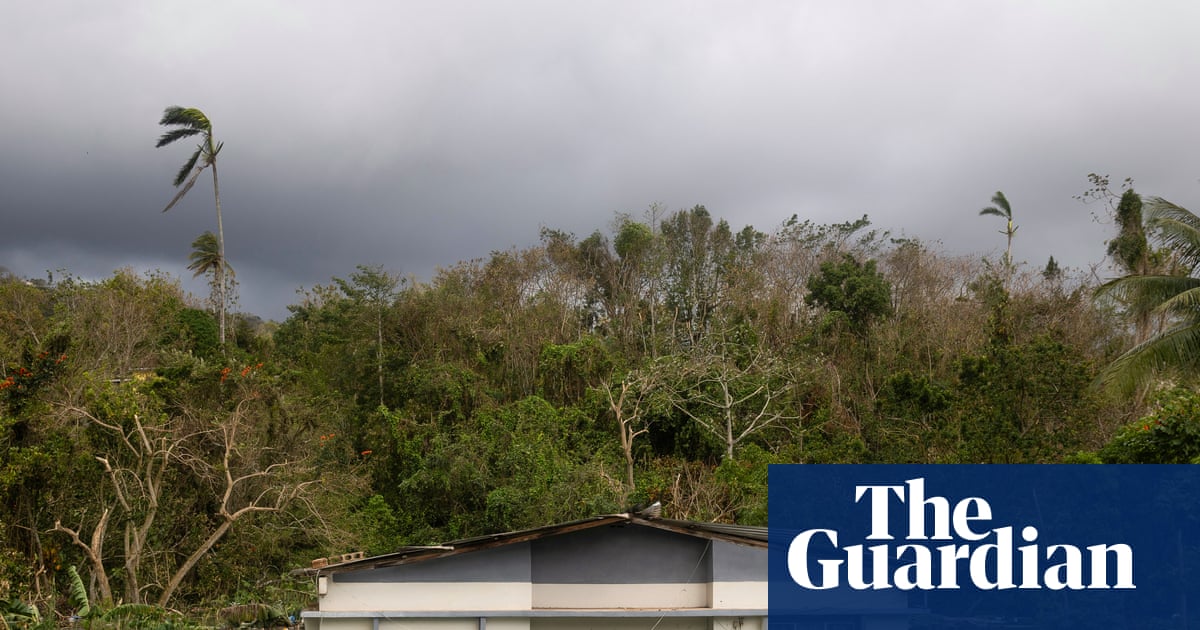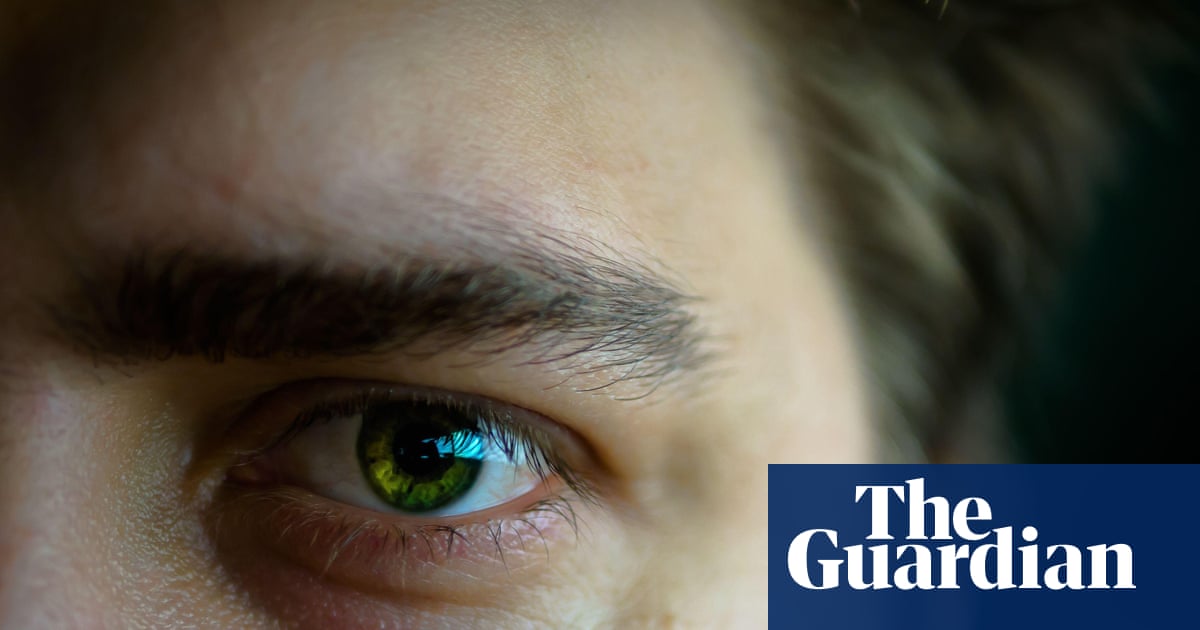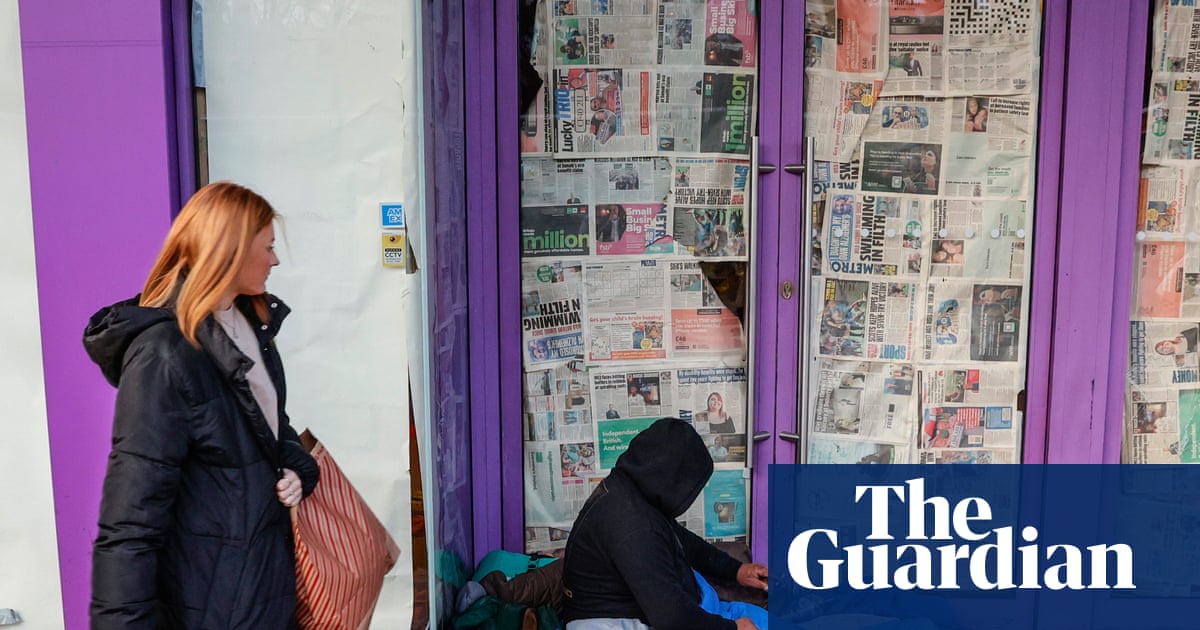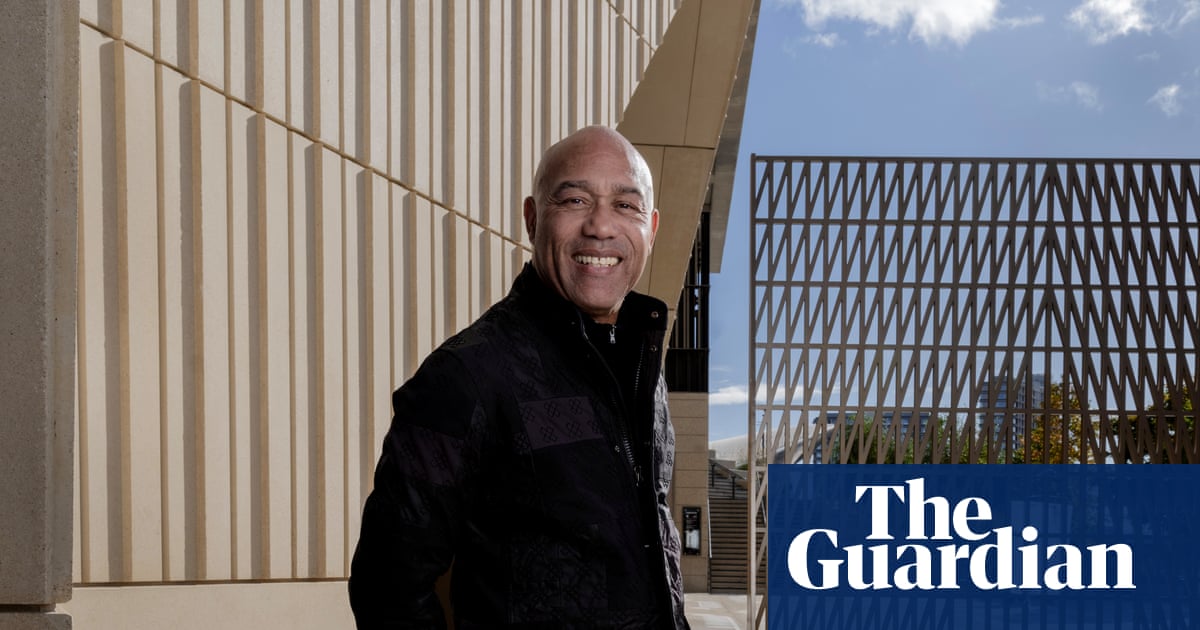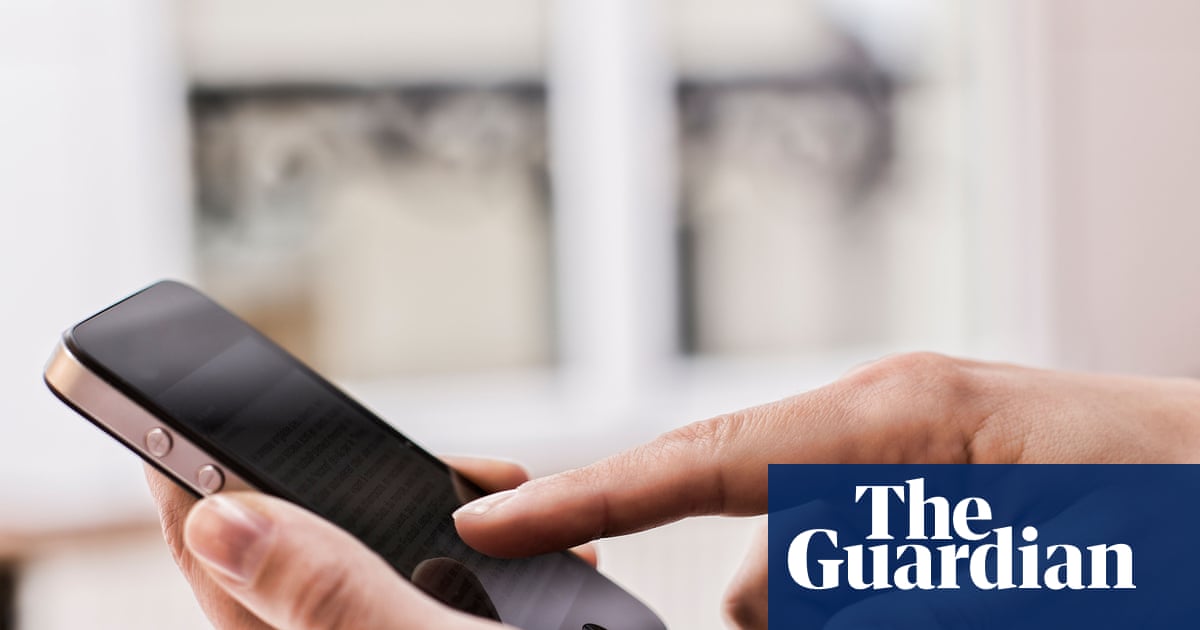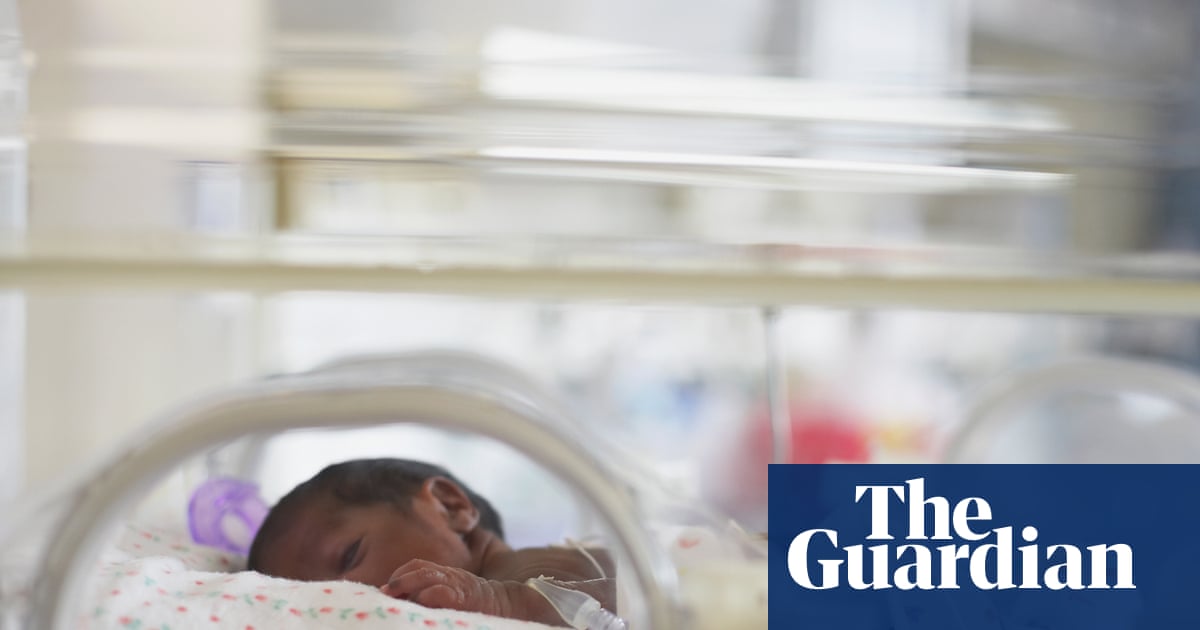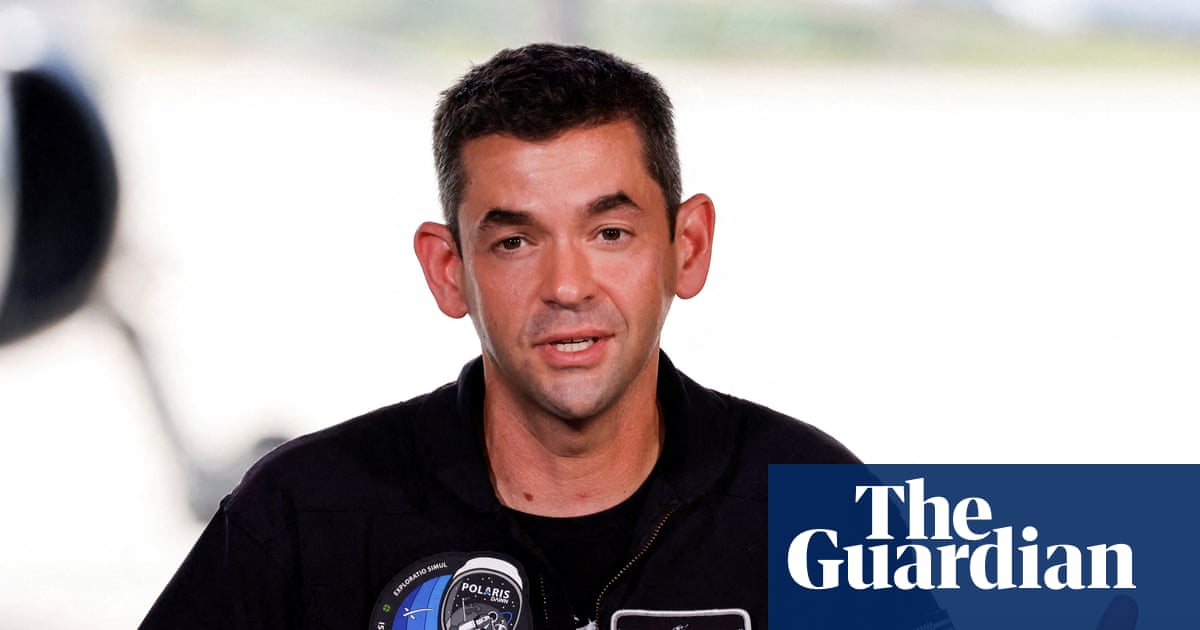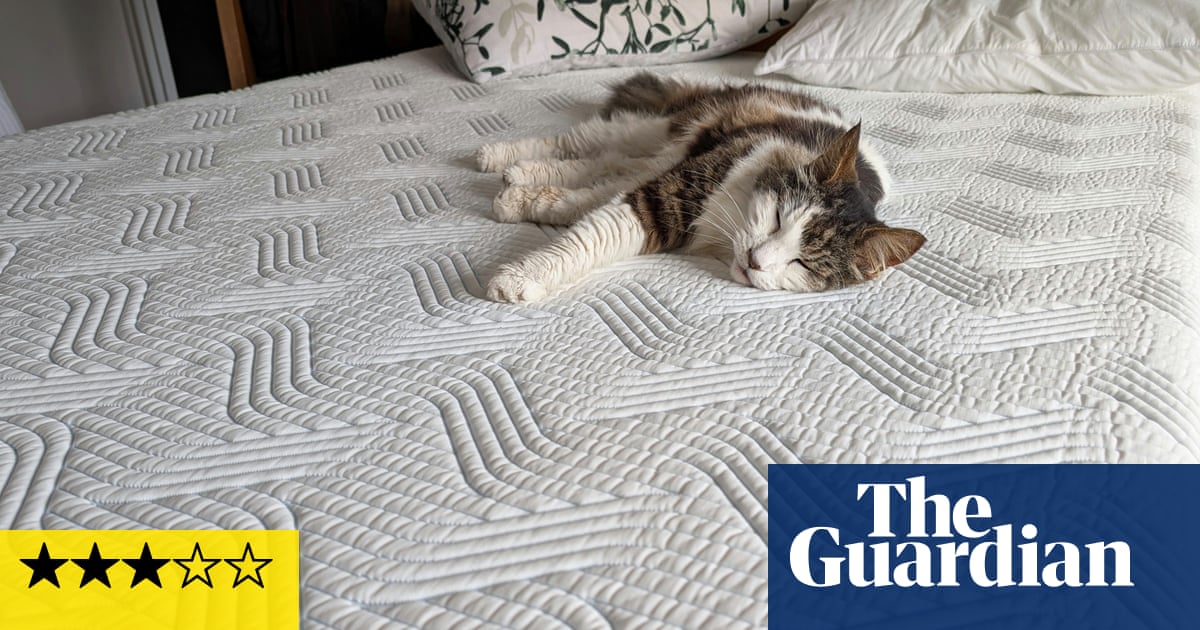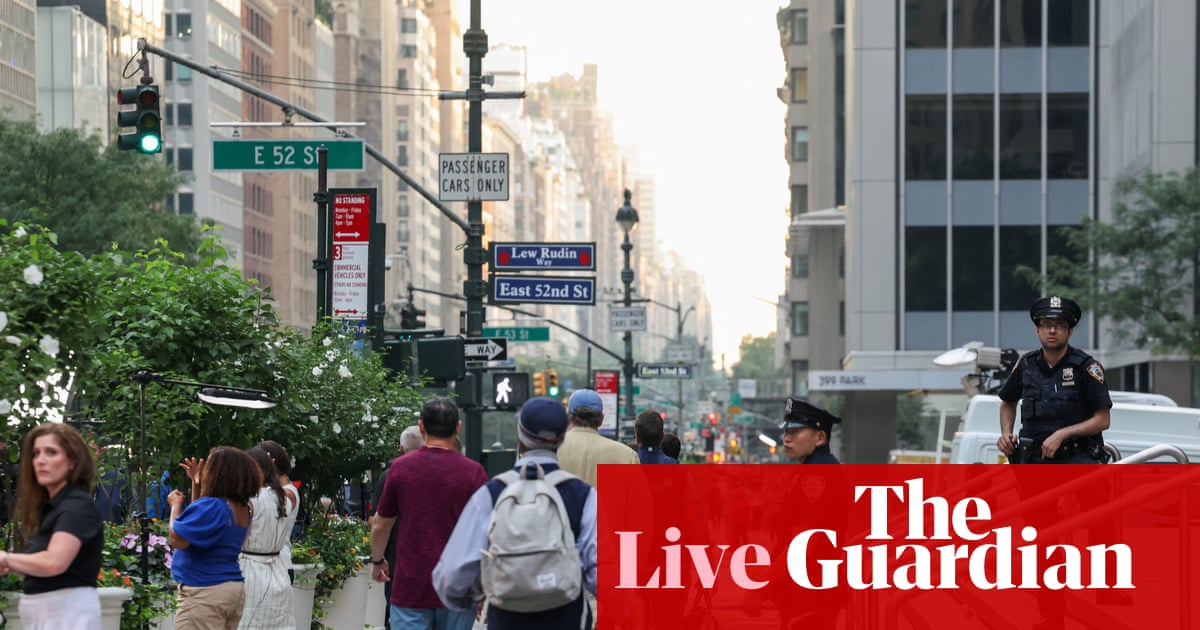Your lips may not be the first thing that comes to mind when you think about skincare, but they’re just as important to look after. That’s partly because the skin on your lips is thinner, making them more susceptible to dryness, peeling and even burning.
It can be tempting to pick the bargain option at the checkout, but not all balms are created equal. Choosing the right one can be tricky – your summer lip balm should be different from your winter lip balm, for example.
I spoke to four consultant dermatologists to find out which ingredients they look for in a lip balm, then selected the best formulations to test based on their recommendations. Below, you’ll find their advice for choosing the best lip balm for you, whether you’re looking for a hydration hit or serious TLC.
At a glance
-
Best lip balm overall:
Biossance Pro-Peptide Lip Perfector
£9 at Sephora -
Best budget lip balm:
Vaseline Lip Therapy Original
£2.49 at Superdrug -
Best lip balm for dry lips:
Aquaphor Lip Repair
£5.67 at iHerb -
Best SPF lip balm:
Blistex Ultra lip balm SPF50+
£2.20 at Notino -
Best natural lip balm:
UpCircle lip balm
£11.99 at UpCircle
Why you should trust me
I’ve spent the past four years testing and reviewing beauty products, during which time I’ve seen the good, the bad and the ugly. It can be difficult to recommend skincare such as lip balms because everyone’s skin and preferences are different. But after completing a cosmetic science course, I now know how to analyse cosmetic formulations and ingredient lists like a pro. This helps me tailor my recommendations to different skincare needs. Whether it’s spotting common irritants and allergens, or picking out skincare heroes, I’ve spent the time agonising over ingredient lists so you don’t have to.
How I tested
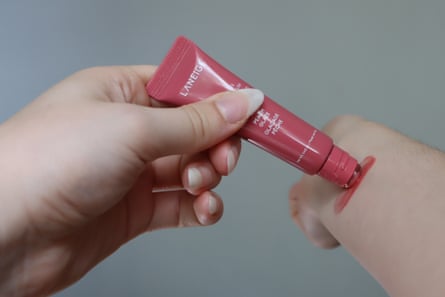
I tested 20 of the most popular lip balms, noting the initial feel and consistency of each one. Throughout the day, I monitored the hydration levels of my lips, recording any plumping or healing effects. I also noted how often each balm needed to be reapplied. Any pilling or uneven application, dryness or irritation were immediate red flags.
If a balm was tinted, I noted how sheer and even the coverage was, as well as how easily buildable it was. I also recorded whether each balm was flavoured or scented – this adds to the experience of wearing a lip balm for some, but others may find scents overpowering.
An equally important part of my testing involved finding out what consultant dermatologists consider the best ingredients and formulations for different circumstances. I looked for those recommended ingredients in all the balms I tested, picking the best products for each case. A few hours (and a tension headache) later, and I was left with the following selection.
As a bonus, I asked the consultants how each lip balm type should be used. You can find their advice below the list of products that came out top in my tests. They also offered their own recommendations, which I included in my testing shortlist.
The best lip balms in 2025
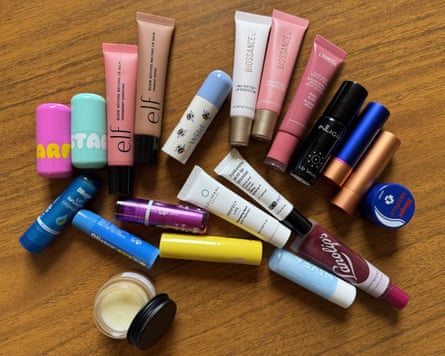
Best lip balm overall:
Biossance Pro-Peptide Lip Perfector
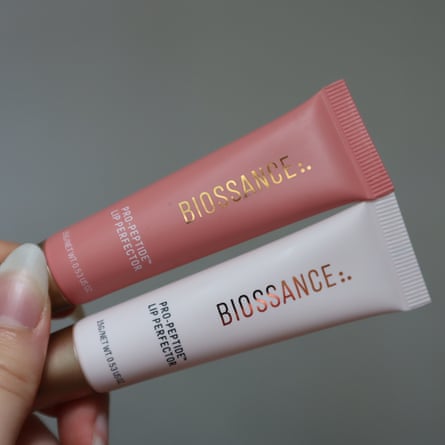
Peptides have become more popular in skincare recently – they’re short chains of amino acids (the building blocks of proteins) that help stimulate collagen production. In lip care, this helps to achieve smoother lips with fewer fine lines over time. This formula from Biossance is vegan, cruelty-free and perfect for maintaining healthy lips year-round.
Why we love it
This lip balm made my lips feel instantly smooth and hydrated from the moment of application. It has quite a thick, non-greasy formula that’s easy to spread using the contoured applicator. Be warned that a little goes a long way: I squeezed out too much the first time and ended up with a smeary mess.
Looking closer, its ingredient list is free from irritants and contains what the experts recommend for healthy lips. That includes hydrating humectants, such as glycerin and hyaluronic acid, which draw water deeper into the skin. Since the hyaluronic acid is “micro-encapsulated”, it helps moisture penetrate more effectively. Antioxidant vitamin E and protective occlusives – ingredients that form a barrier to prevent moisture loss – complete the formula. Put simply, it locks hydration in.
In my tests, my lips continued to feel smooth and hydrated hours after application, only needing a top-up after meals. I liked that the balm is available in clear and tinted shades. Those hoping to get a wash of colour with their lip care can choose between the rosy Blush Quartz and the deep plum Supernova.
It’s a shame that … there’s no SPF in the formula, and it’s lightly scented. I don’t mind the vanilla scent – it made tidying up the mess I made far tastier – but those with sensitive skin may want to choose something unfragranced.
Finish: glossy
Size: 15g
Price per g: from 60p
Vegan: yes
Cruelty-free: yes
Fragrance-free: no
Best budget lip balm:
Vaseline Lip Therapy Original

£2.49 at Superdrug
£2.50 at Boots
Since Vaseline’s pocket-sized blue and white petroleum jelly tins were released in 1999 (with a rainbow of colours launched since), they’ve become a lip-care staple. Three of the four consultant dermatologists I interviewed recommended Vaseline, because of its strong occlusive properties – the formula locks in moisture, helping to naturally and gently repair lips over time.
Why we love it
It’s a simple, fragrance-free formula that does exactly what it says on the well-known blue and white tin. It’s affordable and widely available – I’d bet good money on you finding Vaseline at any local pharmacy. And, since it’s made from shelf-stable petroleum, it won’t go off as quickly as other lip balms. Buy one of these and it’ll last for two to three years in your bag.
Thanks to its simple formula, it’s also unlikely to cause your lips any irritation. That means it’s perfect at protecting them from cold, dry winds in the winter or for overnight use to lock in hydration.
It’s a shame that … they’re so difficult to open. I’m serious: I’ve had so many of these tins get stuck shut over the years, it’s almost insulting to my strength. Also, the balm isn’t hydrating – so if your lips are dry or chapped, opt for the hydrating Aquaphor below.
Finish: glossy
Size: 20g
Price per g: from 12p
Cruelty-free: no
Vegan: yes
Fragrance-free: yes
Best lip balm for dry lips:
Aquaphor Lip Repair
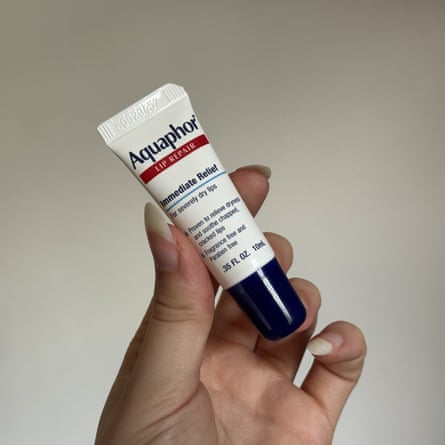
Dry, dehydrated lips can be a nightmare to live with, and some lip balms don’t seem to do anything to fix the problem. This hydrating, repairing lip balm from Aquaphor is the perfect solution: it works quickly to rehydrate your lips, ridding them of chapping without irritation. It was widely recommended by the dermatologists I interviewed.
Why we love it
It’s packed with hydrating glycerin, wound-healing panthenol, soothing shea butter and bisabolol – a component of chamomile. You’ll also find protective occlusives, which lock in the moisture added by the humectants, in the formula. In essence, it will add moisture to your lips and keep it there, all while soothing inflammation from chapping.
The formula feels hydrating and lightweight – perfect for dry, chapped lips, especially in winter. It’s free from endocrine-disrupting and irritating parabens (a type of preservative) and is fragrance-free, so it’s gentle enough to use on sores to nourish lips back to health.
It’s a shame that … it’s not vegan, and Aquaphor doesn’t have Leaping Bunny cruelty-free certification.
Finish: glossy
Size: 10ml
Price per ml: from 57p
Vegan: no
Cruelty-free: no
Fragrance-free: yes
Best SPF lip balm:
Blistex Ultra Lip Balm SPF50+

£2.20 at Notino
£2.75 at Express Chemist
SPF lip balms – particularly those with SPF50 protection – tend to look chalky or leave a smeary white cast on the lips. That’s not a look anybody wants to rock. Thankfully, this no-frills lip balm from Blistex offers SPF50+ in a sheer formulation that’s easy to reapply on busy days.
Why we love it
This lip balm’s colourless formula comes in a twist-up tube and glides on beautifully, leaving behind a layer of broad-spectrum SPF50+ protection.
The balm also contains emollients such as petroleum to help soften the lips while giving the formula a buttery feel. That’s why it feels so nourishing while protecting lips from sun damage.
As with any sun protection, reapplication is needed for full coverage. Thankfully, this lip balm has only a subtle vanilla fragrance, making it inoffensive – appealing, even – for everyday use. Since I finished testing, it’s become my daytime lip balm. I find it sits nicely over lip liner without pilling or separating, so it works just as well in a routine as it does as a stand-alone.
It’s a shame that … the packaging is basic and plastic – as you’d expect with a lip balm this affordable. Don’t let this put you off buying it.
Finish: matt/
Size: 4.25g
Price per g: from 52p
Vegan: no
Cruelty-free: no
Fragrance-free: no
Best natural lip balm:
UpCircle lip balm

£11.99 at UpCircle
£12 at Amazon
Natural products that perform as well as their synthetic counterparts can be hard to find, but this lip-loving formula from UpCircle hits the spot. The balm is packed with antioxidants, natural oils and humectants to give your lips the TLC they deserve.
Why we love it
When I tested this formula, I was instantly struck by how melty and nourishing it felt. It softened my lips without irritating, and helped protect them from pollutants because it’s rich in antioxidants and natural oils. There’s good reason it’s one of the brand’s bestsellers.
I loved using it overnight – there’s no need for SPF, and the formula gets to work without feeling greasy or uncomfortable, unlike other overnight balms. It’s been a staple on my nightstand ever since I tested it.
UpCircle has a refill scheme that lets you return your empty glass jars to be refilled at 20% off the standard price. This means less packaging waste.
It’s a shame that … there’s no SPF in the formula. And, while the refill scheme is a welcome change, other lip balms – such as the Wild balm below – can be refilled at home.
Finish: matt
Size: 15ml
Price per ml: from 80p
Vegan: yes
Cruelty-free: yes
Fragrance-free: free from artificial fragrance, naturally scented with oils
after newsletter promotion
The best of the rest
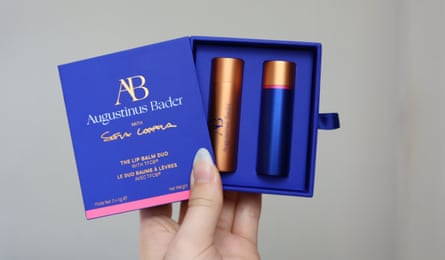
Laneige Glaze Craze

£18.50 at Sephora
£19 at Space NK
Best for: a tinted, glossy finish
If you’re hunting for a tinted gloss with all the same benefits as a lip balm, the Glaze Craze is an easy recommendation. It’s available in six shades, ranging from rosy pink to a deep reddish brown – all properly pigmented and offering a glossy wash of colour without the precision needed for a lipstick.
I found it easy to apply evenly because of its doughnut-shaped applicator. Over a day, the balm gave my lips lasting hydration and softness – probably due to the hyaluronic acid and ceramides in the formula. I’d suggest using it with a lip liner for a defined look, or on its own for a more relaxed finish.
It didn’t make the final cut because … it’s heavily fragranced, which makes it less suitable for those with sensitive skin. It also isn’t cruelty-free or vegan.
Finish: glossy; size: 12g; price per g: from £1.54; vegan: no; cruelty-free: no; fragrance-free: no
Supergoop! Lipshades SPF30

£16.10 at Cult Beauty
£22 at Space NK
Best for: brightly coloured lip protection
If tinted lip balms aren’t pigmented enough for your liking and you want something to protect your lips from sun damage, the Lipshades SPF30 balms are a great option. They’re as pigmented as a standard lipstick, glide on comfortably and only need reapplication after eating.
I tested the shade Love You More, which is a deep berry red, but it’s also available in Lucky Me, a rosy pink shade, and High Five, a peachy red. As well as SPF30, the formula is packed with antioxidants and soothing chamomile extract, adding a little extra TLC to a great-looking lippy.
It didn’t make the final cut because … its high pigment levels and creamy formula made it slightly tricky to apply neatly. But if you regularly wear lipstick and want protected lips, it’s a great option – just use a lip liner before application.
Finish: matt; size: 3.5g; price per g: from £4.60; vegan: yes; cruelty-free: yes; fragrance-free: free from artificial fragrance, naturally scented
Augustinus Bader lip balm duo

£65 at Space NK
£65 at Augustinus Bader
Best for: luxury skincare fans
There’s no getting past it – these lip balms are expensive, but if you’re a fan of luxe skincare, they’re a brilliant buy. They contain Augustinus Bader’s TFC8, a patented component designed to support the skin’s natural regeneration process, combating signs of ageing and skin damage. There’s also castor seed oil to reduce moisture loss and shea butter to soften the lips.
On first application, the balm melts on to your lips and leaves them feeling immediately softer, while the tinted version gives a lovely satin finish with a wash of colour. The packaging is gorgeous, too: the two balms come in a gift box and each has a metal case that feels weighty and luxurious. With no nasties in this vegan formula, it’s perfect as a gift for even the fussiest of beauty fanatics.
It didn’t make the final cut because … it’s expensive compared with other balms. Its luxury formulation could be worth the money to some, though, especially if you’re looking for an indulgent gift.
Finish: satin; size: 8g; price per g: £8.10; vegan: yes; cruelty-free: yes; fragrance-free: yes
Wild refillable lip balm

From £7.20 for a case and a refill at Wild
£16.99 for a case and three refills at Amazon
Best for: a refillable lip balm
Wild is best known for making refillable, natural deodorants, and its line of refillable lip balms follows the same environmentally focused ethos. Simply buy a case bundled with a refill (from £7.20) and you’re ready to go. There are seven stylish cases to choose from and a wide range of lip balm flavours available, some of which contain SPF25. Wild releases new flavours often – a new one was introduced while this piece was being edited.
I tested the Original SPF formula (a restock is due towards the end of August) and found the refills easy to insert and swap out. I love that the refills are plastic-free, and the luxurious metal cases are durable enough to throw in your bag and forget about. The formula has a solid, waxy, matt finish. On application, I found it gave a smooth coating with no weird films or pilling.
It didn’t make the final cut because … it didn’t feel as hydrating as other formulations – its waxy formula is more suited to mess-free use on the go. That means it’s not the best as an overnight treatment, but it’s great for daytime use.
Finish: matt; size: 4.5g; price per g: from 71p; vegan: yes; cruelty-free: yes; fragrance-free: no
Elf Glow Reviver Melting lip balm

£9 at Elf Cosmetics
£9 at Superdrug
Best for: an affordable tinted balm
This Elf lip balm was an immediate hit. It has an excellent colour range, and each shade has a distinctive smell and taste. I tested the shade Yummy Gummy, which transported me straight back to my childhood with its nostalgic, sweet fruit scent. The balm felt lovely and smooth on the lips, with a glossy finish. It’s packed with emollients and natural oils to soften and hydrate, while its curved applicator hugs the lips, making it easy to apply without a mirror.
It didn’t make the final cut because … it didn’t have quite the same nourishing power as the higher-end options on the page. But, for the price, it’s a great choice.
Finish: glossy; size: 15g; price per g: 60p; vegan: yes; cruelty-free: yes; fragrance-free: no
What you need to know
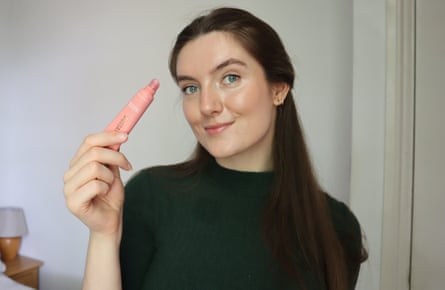
What are the different types of lip balm, and what is each best for?
Most people know that lip balms come in various forms, but they may not be aware that experts suggest using different types for treating different concerns.
Dr Rakesh Anand, who works at Skin Surgery Associates of London, says: “There are generally four main types [of lip balm]. Occlusive balms (eg petroleum-based) are best for sealing in moisture and protecting lips from environmental stress. Emollient balms (eg lanolin, shea butter) are ideal for smoothing and softening lips. Balms with humectants are good for lips that feel tight or dehydrated, especially overnight. Tinted or cosmetic balms are for daily use when you want some colour, but they may lack the full protective properties of a dedicated treatment balm.”
Lip masks are another popular kind of treatment. Consultant dermatologist Dr Magnus Lynch advises these “can be beneficial overnight or during periods of extreme dryness, as [they] deliver intensive hydration and help repair the lip barrier”. But it seems the experts are divided on their value. Dr Jonathan Kentley of Montrose London and the Lister hospital offers a different perspective: “I don’t see the need [for lip masks]; using a rich occlusive lip balm is enough for dry lips. However, some people do enjoy the ritual.”
Instead, Kentley recommends looking for specific ingredients to combat your concerns. “Look out for natural oils such as shea butter and coconut butter, which are full of richly hydrating fatty acids,” he says. “These are deeply moisturising and delightful to apply. Other great natural ingredients include beeswax (produced by the humble honeybee) and lanolin, which is derived from sheep’s wool. These mimic the skin’s natural oils to act as a moisturiser. You may recognise hyaluronic from your serum or facial moisturiser, but it’s also great for hydrating and plumping the lips.”
On the flipside, there are some ingredients, such as common irritants, you’ll want to avoid if you have sensitive skin. Dr Derrick Phillips, consultant dermatologist and spokesperson for the British Skin Foundation, advises: “There’s a small risk of developing an allergy to ingredients present in lip balms with repeated use. Common allergens include fragrances, gallates, lanolin, colophony and flavourings, such as vanilla. While these ingredients don’t necessarily need to be avoided, it is important to be aware of the risk.”
Should I use a different lip balm in summer and winter?
Yes. Lynch says: “In winter, use a thicker, more occlusive balm to protect against cold, dry air, while in summer, a lighter balm with SPF helps guard against sun damage and heat.”
Don’t overlook the need for SPF, as Lynch says: “The lips are highly vulnerable to sun damage, which can lead to sunburn, premature ageing and even skin cancer. I recommend using SPF30 or higher on a daily basis.”
That said, SPF lip balms can be chalkier than other formulations. Kentley says: “SPF lip balms are notoriously tricky to get right. It’s OK if you’re skiing and don’t mind a whitish smear on your lips, but for daily summer use, you tend to want something a little lighter. The good news is that SPF technology has come on leaps and bounds, and there are many more cosmetically acceptable products out there.” This makes sense, since some of the SPF lip balms I tested left an odd white film on the lips, which wasn’t the look I was going for.
Which ingredients are best for extremely dry, chapped lips?
Dry, chapped lips can be bothersome. Using the right ingredients can help solve the problem much faster. Anand suggests looking for balms “containing lanolin, petrolatum, ceramides and shea butter, all of which are excellent for restoring the skin barrier. Panthenol (vitamin B5) and bisabolol (from chamomile) can also help soothe inflammation and aid repair. If your lips are persistently cracked, it may be worth avoiding all fragrance and flavours.”
If you find yourself needing to reapply your lip balm more frequently every time you use it, your lip balm isn’t the problem – a common misconception explored by the Guardian recently. It could be down to several reasons, according to Phillips. “Many lip balms are flavoured or taste sweet, which can encourage people to lick their lips, often without realising. This can dry out the lips and result in a need for further application,” he says. So, while tasty lip balms may be more appealing to apply, try using a flavourless balm if you notice this problem. Additionally, Phillips says, “Allergies to ingredients in lip balms can also result in a sensation of dryness despite frequent applications.”
Sarah Matthews is a journalist and skincare enthusiast who can’t quite believe she gets to spend her days reviewing beauty products. She specialises in health and beauty, testing everything from hi-tech skincare gadgets to the latest hair-styling tools. When she’s not testing products, you’ll find her talking someone’s ear off about the importance of wearing SPF

 3 months ago
94
3 months ago
94

